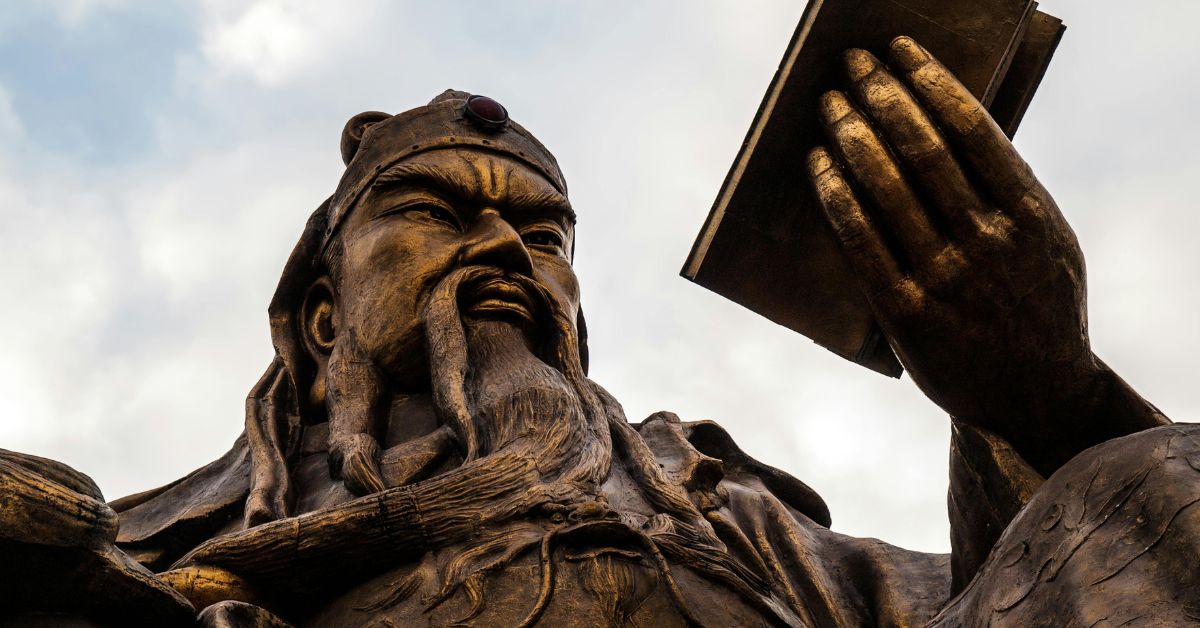
Eastern Wisdom: The Tao Te Ching in Today’s World
Outline:
- A Book of Paradoxes, A Mirror to the Soul
- What Is the Tao? Beyond Words, Beneath Everything
- The Wisdom of Wu Wei: Doing Without Forcing
- Softness as Strength: Water, Yielding, and the Quiet Power
- Taoist Lessons for Modern Living
- Walking the Way
- FAQs
A Book of Paradoxes, A Mirror to the Soul
It begins with a paradox: “The Tao that can be spoken is not the eternal Tao.” With that, the Tao Te Ching, one of the most quietly powerful texts in human history, opens a door into a worldview that refuses to be caged by logic alone. Written over 2,500 years ago by the enigmatic sage Laozi, the Tao Te Ching is not a manual in the Western sense. It doesn’t argue. It invites. It whispers where others shout.
Composed of just 81 short chapters, it has no plot, no commandments, no clear doctrines. And yet, it continues to resonate across time, culture, and language—precisely because it doesn’t offer fixed answers, but reflections. It speaks in images: valleys, rivers, uncarved blocks, empty vessels. Through metaphor, it points toward a deeper, subtler wisdom—one that feels increasingly essential in a world drowning in noise.
What Is the Tao? Beyond Words, Beneath Everything
The Tao is not a god. It is not a rulebook. It is not even something one can “believe in.” The Tao—often translated as the Way—is the fundamental principle behind the rhythms of the universe. It is the path that water follows, the life within life, the silent pattern of things unfolding as they must.
To grasp the Tao is not to intellectually conquer it, but to attune to it. It’s not about knowledge—it’s about harmony. It’s noticing how trees bend with the wind, how night follows day without resistance, how a skilled artisan flows with their tools, rather than controlling them.
Modern science speaks of similar truths in different language: systems theory, emergence, the intelligence of nature. The Tao, though ancient, is strangely modern. It teaches us that life is not a problem to be solved but a current to be followed.
The Wisdom of Wu Wei: Doing Without Forcing
One of the central teachings of Taoism is wu wei, often misunderstood as inaction. But wu wei is not laziness. It is effortless action, aligned with the nature of things. It is doing the right thing at the right time, without strain or ego. It’s swimming with the current rather than exhausting yourself against it.
In today’s hustle culture, wu wei is revolutionary. We glorify grind, glorify control. Yet often, the more we force, the more resistance we create. We try to push outcomes into existence, and in doing so, we lose touch with timing, with flow, with intuition.
The Tao Te Ching suggests something countercultural: “By doing nothing, nothing is left undone.” This is not passivity—it’s attunement. The most effective action is that which arises from stillness, not panic. From presence, not pressure.
Softness as Strength: Water, Yielding, and the Quiet Power
Laozi uses the image of water again and again: “Nothing in the world is as soft and yielding as water. Yet for dissolving the hard and inflexible, nothing can surpass it.”
Water doesn’t resist. It adapts. It flows around obstacles, carves through rock over time, nourishes life without effort. This is Taoist strength—not the clenched fist, but the open hand. Not domination, but endurance. Not rigidity, but resilience.
In a world that often equates power with control, this softness can feel disarming. But think of the most deeply grounded people you know—those who remain calm in crisis, generous in conflict, clear in confusion. That is water-like wisdom.
Taoist Lessons for Modern Living
The Tao Te Ching doesn’t demand that we renounce life—it shows us how to be in it more fully. Here are ways we can embody its principles today:
- Create space. Just as an empty bowl is useful precisely because it’s empty, our lives need room—for reflection, for slowness, for meaning to emerge. Overfilled schedules, like overfilled vessels, overflow with noise.
- Observe nature. The Tao is reflected in trees, rivers, clouds. Noticing their rhythms helps us notice our own. It teaches patience, timing, and humility.
- Let go of control. This doesn’t mean apathy—it means acting with intention, not desperation. Make your effort, then let the outcome unfold.
- Speak less, listen more. “Those who know do not speak. Those who speak do not know,” Laozi writes. Silence is not absence—it’s awareness.
- Value being over having. Taoist wisdom reminds us that the most valuable things—peace, clarity, presence—cannot be owned, only lived.
In a time defined by overstimulation, polarization, and burnout, these principles offer a return to balance. Not as escape, but as grounding.
Walking the Way
The Tao cannot be mapped. It must be walked.
To live in alignment with the Tao is not to withdraw from the world, but to move through it with grace. To listen more deeply. To act more gently. To trust more fully in the unfolding of things beyond our control.
In the end, the Tao Te Ching doesn’t ask us to believe anything. It asks us to notice. To feel. To follow life with a certain reverence, not for doctrine, but for mystery.
There is a stillness beneath the noise, a current beneath the chaos. That is the Tao. And even now—especially now—it is waiting to be heard.
FAQs
What does “Tao” mean in everyday terms?
The Tao is the natural flow of life, the unseen order of the universe. It’s not a thing to understand intellectually, but a way to live in harmony with how life unfolds—through presence, balance, and non-resistance.
Is the Tao Te Ching a religious text?
Not in the traditional sense. It’s more of a philosophical or spiritual guide. It doesn’t promote worship, but reflection. It’s used in Taoism, but its insights resonate far beyond religious boundaries.
How can I apply Taoist ideas without changing my whole lifestyle?
Start by creating small pauses in your day. Pay attention to nature. Let go of forcing outcomes. Practice acting from stillness instead of stress. Even small shifts toward flow can have profound effects.


